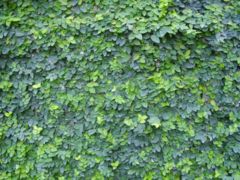Ficus pumila
| Ficus pumila subsp. var. | Creeping fig, climbing fig | |||||||||||||||||||||||||||||||||||||||||||||||||||||||
|---|---|---|---|---|---|---|---|---|---|---|---|---|---|---|---|---|---|---|---|---|---|---|---|---|---|---|---|---|---|---|---|---|---|---|---|---|---|---|---|---|---|---|---|---|---|---|---|---|---|---|---|---|---|---|---|---|

|
|
| ||||||||||||||||||||||||||||||||||||||||||||||||||||||
| ||||||||||||||||||||||||||||||||||||||||||||||||||||||||
Ficus pumila (creeping fig or "climbing fig") is a woody evergreen vine that is native to East Asia. As the common names would suggest, it has a creeping habit and is often used as a houseplant. It is hardy and fast growing and requires little in the way of care as long as the soil is not allowed to dry out between waterings. There are several cultivars, including a variegated and crinkled leaf form.
In warmer climates it can be grown outdoors, but it can become invasive and cover landscape features if not contained. It should not be allowed to climb houses or wooden structures, as the woody tendrils can damage buildings.
| Standard Cyclopedia of Horticulture |
|---|
|
Ficus pumila, Linn. (F. stipulata, Thunb. F. repens, Hort., not Rottl.). Creeping Fig. Prostrate or climbing shrub, clinging close to conservatory walls and then flattened: lvs. more or less 2-ranked, on very short petioles, ovate, obtuse, entire or slightly wavy, rounded or cordate at the base, often unequally; veins prominent below. Japan, China, Austral. H.U. 4 p. 359 (the last two as F. stipulata).CH
|
Cultivation
- Do you have cultivation info on this plant? Edit this section!
Propagation
This plant requires the fig wasp Blastophaga pumilae for pollination.
Pests and diseases
- Do you have pest and disease info on this plant? Edit this section!
Varieties
Gallery
If you have a photo of this plant, please upload it! Plus, there may be other photos available for you to add.
-
photo 1
-
photo 2
-
photo 3
References
- Standard Cyclopedia of Horticulture, by L. H. Bailey, MacMillan Co., 1963
External links
- w:Ficus pumila. Some of the material on this page may be from Wikipedia, under the Creative Commons license.
- Ficus pumila QR Code (Size 50, 100, 200, 500)



